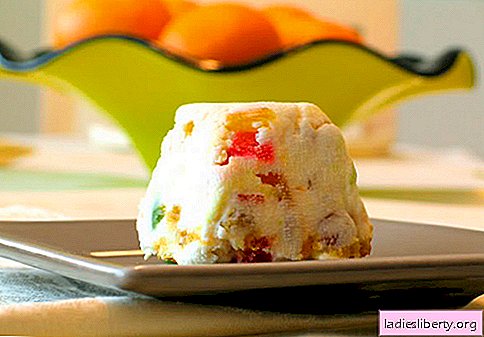
Umbilical hernia in puppies is a common pathology. This defect is characterized by prolapse of internal organs (uterus, intestinal loops, omentum) into the formed or physiological opening of the lower abdomen. Most often, the disease is hereditary and has a genetic nature.
Umbilical hernia in a puppy: causes
The birth of an animal is accompanied by the closure of the abdominal opening, to which the umbilical cord was previously attached, connecting the baby with the womb. Usually, the umbilical ring closes completely during the day. The skin on the stomach becomes even. But sometimes a deviation occurs, manifested in an increase in the size of the ring or a change in its shape. The result is a stretch of connective tissue and prolapse of organs. This defect can either disappear in a few days, or become a prerequisite for infringement of internal organs.
The main causes of umbilical hernia in a puppy are:
heredity;
low tone of the abdominal wall;
connective tissue weakness;
incorrect removal of the umbilical cord;
birth injuries;
flatulence;
increased abdominal pressure.
Dachshunds, bull terriers, chow chow, collies, German shepherds, basenji, poodles, bobtails and Pekingese have a genetic predisposition to pathology.
Types of pathology
Formations are congenital (inherited as a recessive trait) and acquired. In the second case, tumors arise under the influence of external factors or anatomical features. Umbilical hernias are classified into four types.
The true ones. An hernial sac formed by a protruding pleura or peritoneum falls into an unclosed umbilical ring. The contents of the bag are part of the internal organs.
False. They are a soft hollow growth that fills with fat over time.
Driven by. Part of the precipitated organ is elastic and mobile; it easily rises to its former place with pressure.
Restrained (solid). Hernial gates pinch the organ and can cause tissue swelling and growth.
Symptoms of an umbilical hernia in a puppy. Diagnosis of the disease
The formation is an elastic tumor of soft consistency that occurs in the navel area. She does not violate the skin and in most cases does not cause the dog discomfort. The size of the growth varies from the size of a pea to a walnut. The defect is easily palpated and perfectly visualized. With more careful pressure, a hernial ring can be detected.
Secondary clinical manifestations of acquired hernia include:
the presence of seals;
change in breathing rhythm;
pain
depression and lack of appetite.
A preliminary diagnosis can be made by the owner himself, identifying the puppy with the main symptom of an umbilical hernia - a convex rounded skin - upon visual inspection or palpation. The final conclusion is made by a veterinarian based on a blood test (general and biochemical) and urine. If necessary, an ultrasound examination of the digestive tract.
Puppy umbilical hernia treatment: what to do at home
Having discovered a tumor, the owner must take measures to treat it. Important! Before starting any therapeutic procedures, you should always consult a veterinarian. In the first two months of the puppy's life, the doctor may decide on non-surgical gluing of the hernia, if it is adjustable.
Self help is possible provided that the education is small and the puppy is still small. In these cases, palliative therapy is used. The method consists in applying a fixation bandage over the growth, consisting of a coin or a dense ball of cotton wool, fixed with several strips of adhesive plaster. The procedure is carried out immediately after reduction.
Good results can be achieved with a firming massage of the area around the navel. The purpose of the procedure is to activate blood circulation, relieve spasms, and strengthen the abdominal wall and ligamentous apparatus. Five-minute manipulations are carried out several times a day. The technique is based on kneading and stimulation of the abdominal region.
First, fingertips carry out stroking, which contribute to the relaxation of the animal. Then slowly in a clockwise direction begin circular movements. Watch the reaction of the pet - if there is pain, the procedure should be stopped immediately. Attention! Massage is contraindicated in infections, wounds, fever and inflammation.
Remember that a pet with a hernia should not be allowed to stand on its hind legs. You can take a sick dog in your arms only under your stomach.
Surgical treatment
An unpleasant consequence of the pathology may be pinching of the organs of the hernial sac, impaired blood supply and necrosis, which makes the umbilical hernia in the puppy mandatory for removal. The clinical picture of pinching includes:
increase in body temperature;
enlargement and redness of the hernia;
peritoneal edema;
rapid breathing and palpitations;
tension and pain during palpation;
vomiting
apathy, nervousness;
refusal of food;
lack of stool.
In the presence of the above symptoms, independent or untimely help can aggravate the situation, and in advanced cases, it can lead to death. At the slightest suspicion of infringement, the owner should immediately contact the veterinarian.
The purpose of the surgery is to restore the normal functioning of the body and prevent negative consequences. A simple operation is performed under local anesthesia using sedatives. The surgeon cuts the skin, opens the hernial sac, then adjusts the internal organs, pulls the umbilical ring and sutures. The procedure is possible only if the puppy is fully vaccinated.
After surgery, the animal is shown wearing a bandage. Suture healing is promoted by courses of antibiotics, painkillers, vitamins and immunostimulants.











